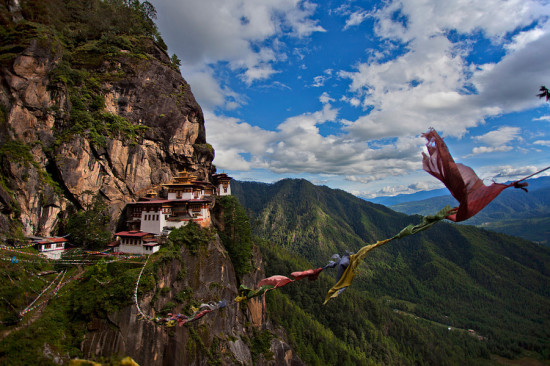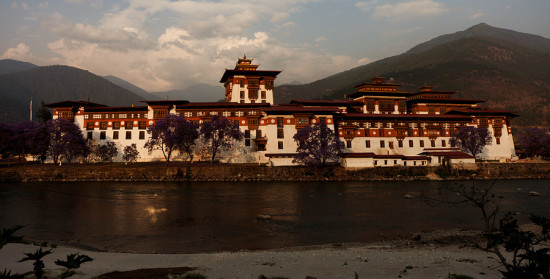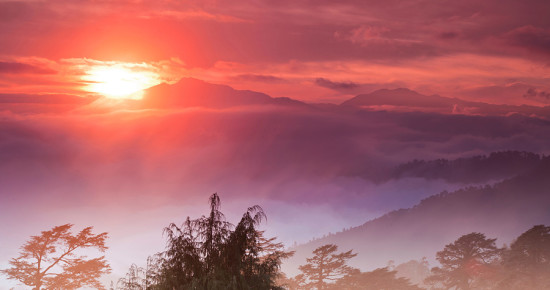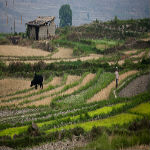See more about our upcoming photography tour to Bhutan.
There are many things that contribute to making great photographs. The light needs to be perfect, the weather has to be conducive and the perfect location/shooting angles have to be found. Sometimes we have to be at the right time of the day to ensure that the subjects are available. Certain time bound activities – like photographing farmers at work or catching a festival – requires being there at the right time of the year too. Sometimes you have to wait for hours together for that perfect moment that you had thought through.
Great images happen only when all these things come together. That’s why, as photographers, we must put our time into research, which helps in ensuring that all these parameters contribute positively. Often, planning has to be tight enough to make the best use of available time. During our travel photography tour to Bhutan, we do several such things that helps ensure that we get the best photography opportunities in the available time. Here are some examples of that planning and scheduling that helps come back with beautiful images from the tour.
1. Going at the wrong time (which is the right time for photography)!
One of the activities in our list during the photography tour to Bhutan is visiting and photographing Paro Taktsang or Tiger’s Nest Monastery. The monastery has an almost-unbelievable setting, located precariously on a ledge in the middle of a tall vertical rock-face of the mountain. The views are brilliant and so are photography opportunities. It takes a few hours of uphill climb to reach the top, which is some amount of effort. Now, common sense always says that you should begin hikes early in the day before the sun is high and finish as soon as you can. While there is nothing wrong in this argument, as photographers we need to think of all parameters that may affect the quality of our photographs as well.

This well-lit image of Paro Taktsang would not have been possible if we decided to start early and come back early in the day.
One of the things we discovered in planning the shoot at Paro Taktsang was that the sun is directly behind the monastery in the first half of the day. This means, if we begin the trek early in the morning, we arrive on the top somewhere around 9am to 11am (depending on when we start and how soon we make it to the top), when the quality and direction of light are very poor for photography.
Keeping this in mind, we decided to go against tradition and started the hike only by 11am. This also allowed us to make a long stop half-way through for lunch, giving us plenty of rest along the hike as well. We would reach in the second half of the day and were able to stay up as late as 4pm, when the sunlight was behind us and shown beautifully on the monastery. By this time, sunlight also begins to get softer and has a slightly warmer glow to it, which helps all the more in making better images. This is something that would never have been possible in the morning hours.
2. Spending a lot of time at one place (and in turn enjoying the variation in light)
You can arrive at a place during any time of the day if you do not have photography in mind. But as photography enthusiast, you need observe a lot of things and also keep quality of light in mind. Sometimes, different kind of images of the same subject can be made just be arriving there at different times of the day. Especially in the evening hours, the quality of light can vary quickly, which not only helps us make a variety of images in a few hours, it also gives an opportunity to study how variation in light affects quality of the images made.
By spending a lot of time at Punakha Dzong, we were able to capture the magnificent structure in different moods at different kind of lighting.
Punakha Dzong (dzong: fortress in Bhutanese), a magnificent structure surrounded by hills and located next to confluence of two rivers, is one of the most photogenic structures in Bhutan. We visit the Dzong during the first half the day to see its insides and construction, but don’t bother to shoot its beautiful exteriors flanked by the river. Instead, we come back again early in the evening when the sun is about to go behind the mountains. We quickly move around to make the best of the evening light, photographing the Dzong from different angles before the sun sets, and again wait for the next treasured shooting opportunity when the flood lights are turned on. The whole process takes more than two hours, at the end of which we have some great images of the Dzong in a variety of lighting.
3. Staying put at a temple after the prayers are completed (and hence capture something much more exciting)
At Chimi Lhakhang, a small but well-known temple in the balmy Punakha district, we have rarely seen other visitors in the evening hours. Most visitors depart by 5pm when all the official activities at the temple are over. That is the time we are usually waiting for, because we know we have the best photography opportunities coming in now.

We could photograph these young monks by staying till evening, even when the temple doors start closing.
The young boys who are learning to become monks get free-time in the evening and get a chance to let their hair loose. Well, the phrase may not fit well for their clean-shaven or short-haired heads, but you know what we mean. This is play-hour, when one of them brings a football to the open-space next to the temple and everyone chases it from end-to-end. It is a superbly photogenic scene and images made in this hour are something that will remain close to your heart.
4. Doing whatever it takes to be at the right place at the right time (including waking up at 3am and arrive at a high pass in freezing cold)
On one of the days of our visit to Bhutan, we pass through the well-known Dochula Pass in the noon hours. The pass is an hour’s drive from Thimphu and is on the way to Punakha. Travellers usually keep arriving here between 9am and 4pm, and so do we on our way to Punakha.
Dochula is known for its brilliant views of the snow peaks. But they are almost always cloudy during the day, which allows very few people to get a glimpse of mountain ranges.
We decided to wake up at 3am and drive to Dochula Pass, without which we would not have been able to witness and photograph this colourful sunrise over the mountains.
The clearest weather and the highest chances of seeing these mountains is early in the morning, at the time of sunrise. The golden rays of the morning sun also add to the beauty of the snow peaks. But you almost never see anyone here during the sunrise because (1) it is at least an hour’s drive from the nearest town and (2) it is freezing cold in the morning. Most visitors decide that it is impractical and leave it at it. But with photography in focus, we usually do it the other way. On our way back from Punakha, we begin driving as early as 3am and make our way up to Dochula before sunrise. We bear the painfully cold temperature for that one glimpse (and photograph) of the remarkably beautiful landscape. The resulting images are something to cherish.
5. Focus on everything small and large, keeping the eyes open (not just a few well known places)
One of the key to making interesting photographs is to remain open to opportunities and not go with a fixed mindset. While we did have destinations planned out, there were many stopovers and unplanned activities that were as useful and interesting as the planned ones. Such experiences have varied during each visit, and each visit brings new surprises. There are times when we make extended walks in a village instead of driving through. During the months of bloom, we have stopped many times to smell the flowers (literally), enjoy and photograph the efflorescence in the wilderness. We have stopped by foot-bridges and walked across them, photographing the colourful prayer flags stuck on either sides. We have allowed ourselves to such countless experiences by being open and watchful to them, rather than stick to a rigorous schedule of moving from place A to B. This has created many experiences that are fondly remembered both in our minds as well as in photographs.
Most of these images were made not at designated or pre-planned locations, but merely by keeping our eyes open to opportunities and stopping for them as frequently as possible.
See more about our upcoming photography tour to Bhutan.











One Comment